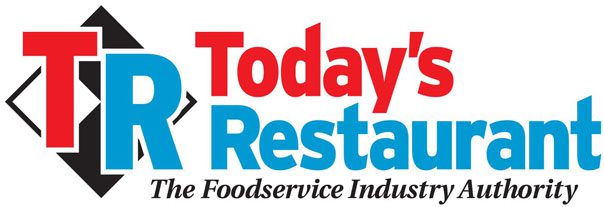
Tech will Drive Critical Food Safety & Quality Improvements in 2023
By Kari Hensien, President, Rize Point
As we close out 2022, the restaurant industry is facing serious (and simultaneous) challenges:
Extreme weather is wreaking havoc on traditional farming methods. · The ongoing Russian-Ukrainian war is stalling food exports, including 9.5 million tons of grain.
- Prevalent issues from the pandemic – including supply chain interruptions and product shortages – continue. · Consumer prices rose 9.1% in 2022, the largest increase in 40 years. · High food prices – combined with food shortages – is causing food insecurity to soar.
While this all seems overwhelming and scary, there appears to be a light at the end of the tunnel, as expected trends for 2023 feel more optimistic. The good news is that tech solutions – which have become more affordable and accessible for food businesses of all sizes – will be instrumental in driving positive change moving forward.
Tech tools will help solve the restaurant industry’s biggest internal and external challenges in the coming year. Here are my predictions for 2023.
Tech will improve internal efforts, boosting safety, accuracy, & transparency.
Restaurant brands should prioritize safety – which includes properly cleaning and sanitizing, checking to make sure equipment is working properly, cooking food to (and holding at) proper temps, avoiding cross-contamination, washing hands and surfaces often, etc. The best way to ensure that your restaurant is following best practice protocols is to conduct regular safety checks, using tech tools to boost efficiency and transparency.
Tech tools can also help increase quality and accuracy – and remove any uncertainty from the equation. A tech system lets your staff follow each order through the production process to ensure it’s made correctly – for instance, double checking that a nut-allergic guest’s meal isn’t cooked in peanut oil or garnished with chopped peanuts. Don’t rely on gut instinct to determine whether a protein has been cooked properly – a digital thermometer can remove any doubt. And digital sensors can alert your staff to any abnormalities, like an overnight power outage or a freezer door accidentally left open.
While line checks and other safety protocols are necessary daily tasks, you also need regular audits to identify any issues so you can fix them immediately. This is key to maintaining high safety and quality standards. The pandemic changed the way we inspect our facilities, especially when travel-related restrictions made in-person inspections unfeasible. Remote audits – where third-party auditors review restaurants via Zoom or similar platform – grew in popularity and remain popular even post-
pandemic. Self-inspections similarly grew out of necessity, as the onus was on restaurants to conduct safety checks when auditors couldn’t visit. This year – and for the foreseeable future – restaurants will rely on a “combination approach” for more continuous oversight and improvement for their brands.
And while it’s wonderful that your restaurant is prioritizing safety and quality efforts, are your suppliers all aligned? After all, we’re only as good as the company we keep. You could have the cleanest facilities and follow all the proper procedures, but if your supplier brings you contaminated lettuce – or improperly held your fresh fish on a steaming hot truck – your brand could experience a safety breach. Tech solutions will help you track, organize, and manage supplier certifications to ensure compliance. You’ll be able to clearly see which suppliers prioritize safety and quality – and avoid the ones that don’t.
Brands will elevate their training, diversity & accountability
Another trend that many will embrace is prioritizing diversity and social accountability. Diverse workforces will become more common, as restaurants work to be more representative of an increasingly diverse customer base. There will be a focus on fair, equitable treatment of employees, which will elevate employee satisfaction, loyalty, and retention. As the labor shortage (thankfully) eases, there will be an influx of new employees that need to be trained. In 2023, restaurants will train differently, building collaborative (not punitive) cultures. When working in a “we’re all in this together” type of environment, employees will feel comfortable asking questions, pointing out infractions, and taking more responsibility for upholding best practices around safety and quality.
This is a major improvement from previous punitive cultures, where staff members feared reprimands for any infractions. Don’t just tell employees what to do. Explain why the rules are in place, and what could happen if they aren’t followed. Use tech tools to teach – and reinforce – key protocols and systems, allowing employees to access important information right at their fingertips.
Digital solutions will become more affordable and widely used.
Tech tools don’t have to break the bank, so even small, independent restaurants can rely on them to stay compliant and competitive.
Not only will tech tools improve safety, quality, accuracy, and transparency, but they’ll provide comprehensive views of brands across an enterprise – and drilled down by location. Data and reports will be easy to see, allowing operators to make more informed decisions about their business. What’s more, operational data and programs will gain credibility in the Board Room, as business intelligence connects operational data and improvement to business performance.
The days of trying to reconcile disparate Excel sheets – or dig through mountains of paperwork – are over. Technology has moved from “nice to have” to essential for restaurants of all sizes.
Tech innovations will help improve external challenges
Food businesses must focus on sustainable food production in the coming year (and for years to come). As climate change puts traditional farming methods – and food production – at risk, tech tools will be instrumental in helping the food industry innovate.
We’ll see an increased effort around sustainable food production, like vertical farming, hydroponics, and aquaponics. Technology is essential to address multiple issues, like making farming more sustainable, building new infrastructure, and reducing our dependence on foreign food supplies. In fact, leveraging tech is essential to help ensure that today’s problems don’t reduce our future food supply.
Product shortages and supply chain disruptions have impacted restaurants for the past three years. Therefore, restaurants won’t necessarily have the ingredients that they were hoping to use for any given shift. Software that accurately tracks inventory, pulls historical sales data, and determines the most popular menu items will continue to be invaluable in dealing with these issues. If your tech solution shows a shortage of chicken wings, for instance, you can pivot to offer another dish (nachos or potato skins, perhaps?) as a replacement.
Focus on what you can control
While it’s frustrating to have supplies stuck on a barge out at sea, or to be paying significantly more for ingredients, or not to be able to reliably get chicken wings for your signature appetizer, these problems are out of your control. What you can control is how you deal with these curveballs.
While the past three years have been a series of disruptions, the restaurant industry has learned the importance of being flexible. We have repeatedly proven to be nimble and resilient through a pandemic and its long-lasting ramifications. Remember: flexibility will lead to your restaurant’s long-term success, even after today’s problems have resolved.
If you can only do one thing to improve your business operations in the new year, your best move is to adopt an integrated tech solution. This one decision can improve every aspect of your business for a successful 2023.
About the Author
As President of RizePoint, the longest-lasting quality management vendor in the marketplace, Kari Hensien has been instrumental in launching the company’s Ignite™ Supplier Certification Management solution and adding new features to make the platform even more valuable. Ignite allows companies to gather, organize, and manage supplier documentation and information in a centralized location, track status and deadlines, ensure compliance, and reduce time-consuming administrative tasks. Ignite leverages the latest tech stacks in cloud computing to deliver better speed of service, security, and performance, with shortened development cycles. Kari at kari.hensien@rizepoint.com
To read more great articles about the industry go to www.trnusa.com
Have you applied for your ERC refund yet? Why not? Go to https://trnusa.com/apply-for-your-erc-recovery-funds-now/ to see if you qualify.




Recent Comments